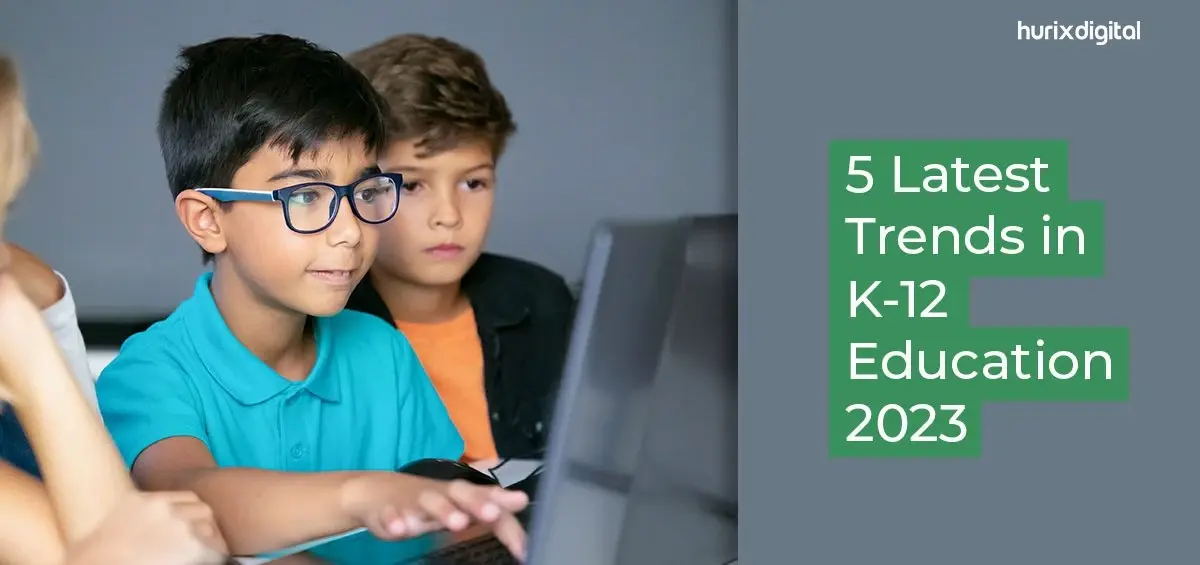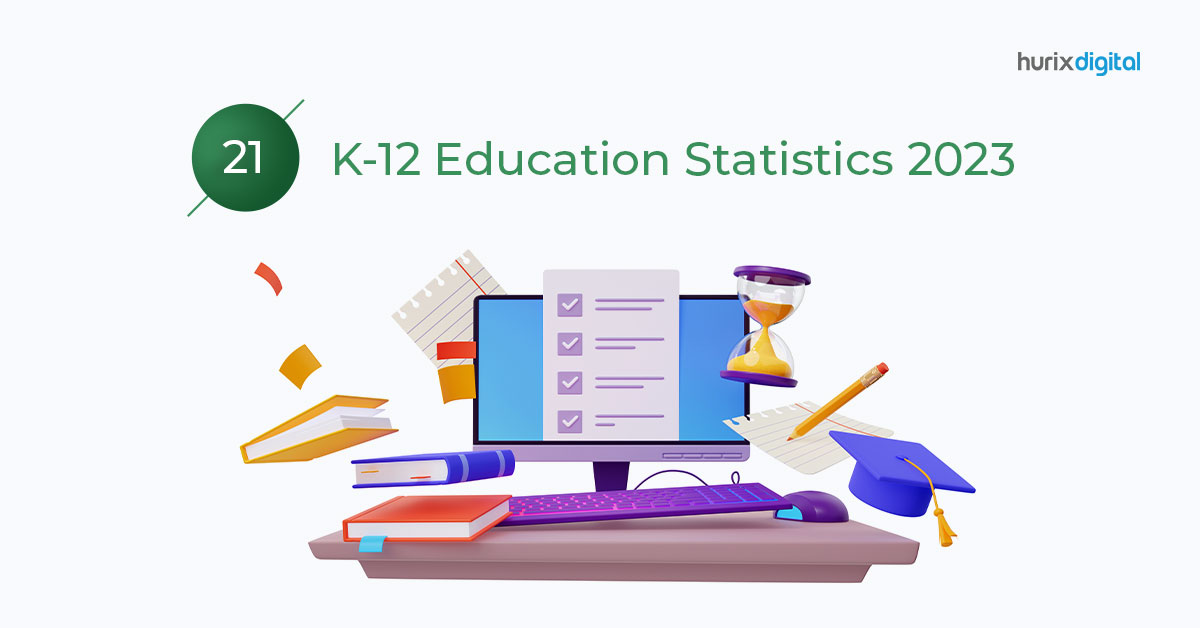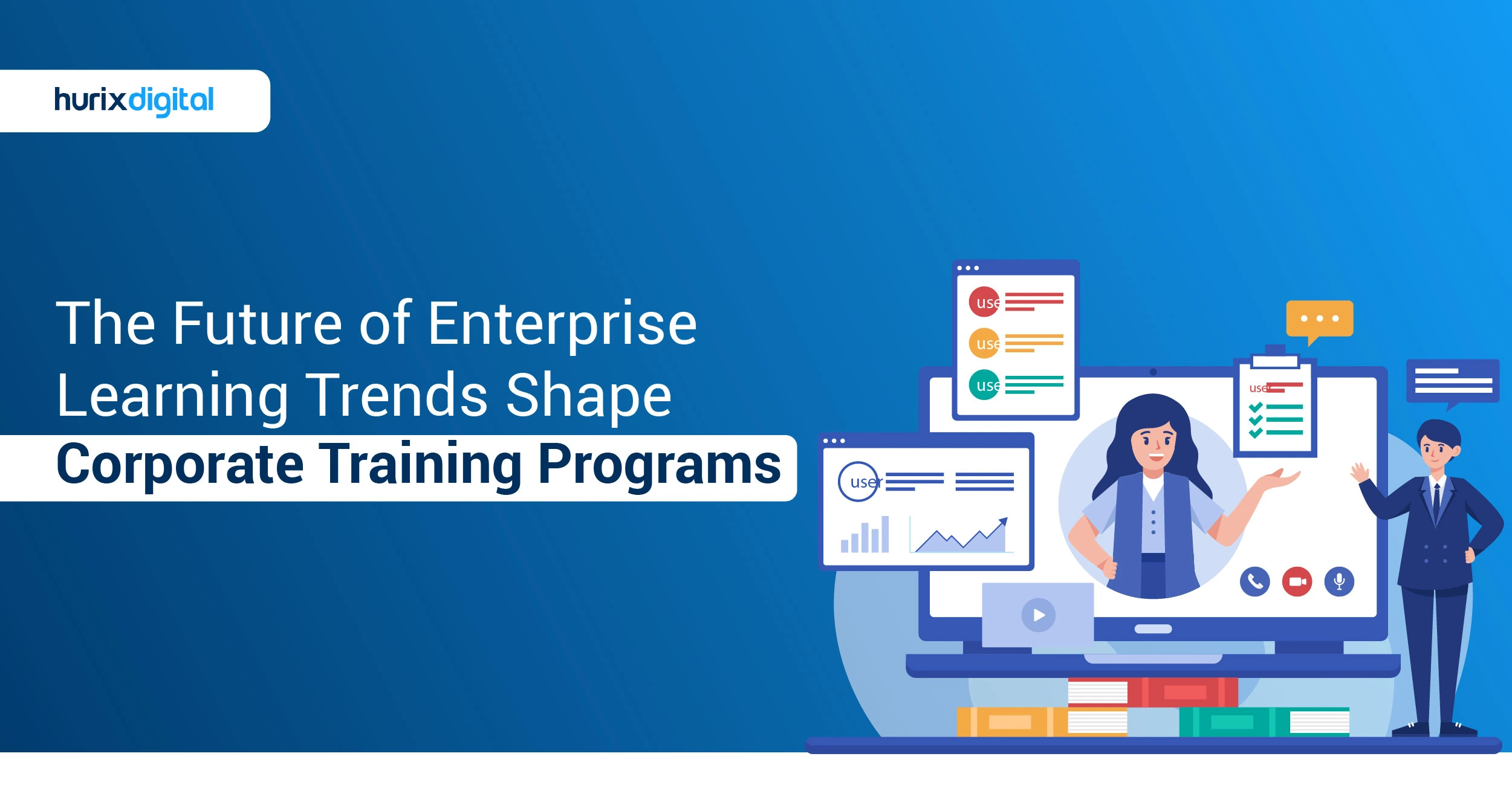
Top 6 eLearning Trends for K-12 Education in 2023
Various eLearning trends for K-12 education have enabled institutions to transcend traditional barriers and enter new territory. We live in an era where education is no longer teacher-led; it is learner-led and learner-focused. In short, we can say that K-12 education has now become of the learner, by the learner, and for the learner.
Both teachers and K-12 institutions have been striving to revamp their curriculum to make learning more targeted and learner-friendly. eLearning plays a massive role in transforming K-12 education.
The global eLearning market has grown by 900% since its inception. It is expected to touch the magic figure of US$325 billion by 2025. And why not? In a survey, 60% of internet users confessed that they have indulged in eLearning. Furthermore, 50% of students from various educational institutions have admitted that they have learned something from an eLearning platform.
However, despite the numbers favoring eLearning, there are also a few challenges.
Over-exposure to digital devices makes both teachers and learners tired and bored. To deal with this challenge, top educational institutions track the latest eLearning trends to make the classes more meaningful for both teachers and learners. They are moving beyond shiny, glitzy interfaces and incorporating impactful and sustainable K-12 learning solutions.
So, what kind of changes are top K-12 educational institutions making to improve their standards? And what are the top eLearning trends in 2022? You will find the answers to these questions and many more in the following sections:
Top 6 eLearning Trends for K-12 Education in 2023
1. Augmented Reality for an Immersive Learning Experience
It is a known fact that learners retain information better when they experience things in real-time rather than studying it or listening to a lecture.
Think about testing new eyewear without actually wearing it or checking how a dressing table would change the set-up of your room without installing it for real. This is the basic premise of Augmented Reality (AR).
AR combines 25% of Digital Reality (DR) and 75% of Existing Reality (ER). AR does not offer learners an out-of-world experience; it simply places virtual objects in the existing world and lets learners see what an object looks like.
An AR-enabled eLearning platform can position an augmented object on a learner’s digital device and demonstrate critical concepts using 3D visualization. The augmented object can be virtual or captured from the real environment.
Augmented Reality allows educationists to bring education out of traditional books, lectures, physical forms, brochures, etc., and offer an immersive experience. It also promotes gamification and makes learning fun, exciting, and effortless.
The future clearly belongs to interactive audio-video materials that activate learners’ imagination and stimulate their senses. Research estimates that the number of AR mobile users will touch 2.4 billion by 2023, a massive improvement from 200 million AR mobile users in 2015.
Hence, if you want to benefit from growing eLearning trends in 2022, AR must figure prominently in your eLearning strategy.
2. Increased Use of Personalized Learning Modules
Thanks to technologies like Artificial Intelligence (AI), Augmented Reality (AR), Virtual Reality (VR), and Machine Learning (ML), learners explore education in a new way. Education is no longer restricted to a physical classroom and guided by the fancies of the teacher. Presently, the onus of learning is on the learners.
Hence, personalized learning modules are one of the top eLearning modes to stay tuned for in the future.
Personalized learning is a learning method through which teachers identify each learner’s strengths, weaknesses, skills, and interests and design a learning plan that best suits each learner.
In personalized learning, teachers collaborate with the students while setting short and long-term goals. Since students are actively involved in curriculum designing, they become the owner and not just passive recipients of the learning process.
However, teachers need to ensure that the curriculum or methodology designed by students does not deviate from the academic standards or the board/university prescribed curriculum. Personalized learning complements the existing curriculum through innovative educational strategies like project-based learning, simulations, etc.
Personalized learning comes as a blessing to learners with special needs. Educational content delivery platforms let you understand each student’s unique needs and give special access to specific students.
You can monitor their performance through advanced analytics and tweak the content accordingly. The extra focus they thus get enables them to retain information more and improve their competency level.
3. Hybrid Classrooms and Hybrid Learning Will Become the New Norm
Hybrid learning is not new. However, it was never as popular as it is now.
Hybrid or blended learning combines the principles of eLearning with conventional in-person learning. Although hybrid classrooms are mostly virtual or digital, learners get the feel of attending a real teacher-led classroom. Both the teacher and learners stay present in a hybrid classroom to learn efficiently.
Sometimes, hybrid learning also includes asynchronous learning materials like online quizzes/tests or video instructions to complement in-person classes. When implemented properly, hybrid learning can open up newer avenues for learners and educational institutions.
Hybrid learning not only reduces the overall cost of training delivery for K-12 institutions but also makes learners more eager to learn.
4. Gamification Holds the Key to the Future
2021 saw a proliferation of platforms that enable gamified learning. Gamification figures prominently in the list of top eLearning trends for 2022. Gamified learning is nothing but mixing the tenets of learning with the fun of gaming.
Gamification enables faster learning. As learners solve challenging exercises through fun games, their proficiency improves. The biggest advantage of this method is that the teacher might or might not have to be actively present during learning.
The goal here is to encourage learners to take ownership of learning and learn more excitingly.
Various educational platforms let you create quizzes and games to increase learners’ retention levels. The more fun they derive from learning activities, the more easily they can master challenging concepts.
5. Interactive Video-Based Lectures
Videos have become bigger and better than ever before. A survey found that 69% of students will most likely watch videos rather than reading text-based lecture notes to grasp educational content better. Videos can quickly capture learners’ attention and improve their retention level.
Hence, we can expect more video-based content from K-12 institutions or teachers affiliated with such institutions in the coming year. With plenty of video creation websites and apps available on the internet, video creation has become extremely easy.
6. Mobile Phones Have Made Learning More Flexible
Ever since smartphones have penetrated the market, data consumption habits have undergone a massive change. Mobile phones are everywhere, and the pandemic has made them more pervasive. Thanks to mobile phones, eLearning has stepped into learners’ pockets, and they can learn any time, anywhere.
Conclusion
The trends mentioned above might have given you a good idea of what to watch out for this 2022. However, this is only the beginning of something massive and immersive emerging in eLearning. Keep an eye on this space to stay abreast of the top happenings in the eLearning segment to scale up your institution’s reputation.
 Upcoming Masterclass | Build an Army of Brand Evangelists using Training & Development | November 20th, 8:30 AM PDT | 11:30 AM EDT | 10:00 PM IST
Upcoming Masterclass | Build an Army of Brand Evangelists using Training & Development | November 20th, 8:30 AM PDT | 11:30 AM EDT | 10:00 PM IST





